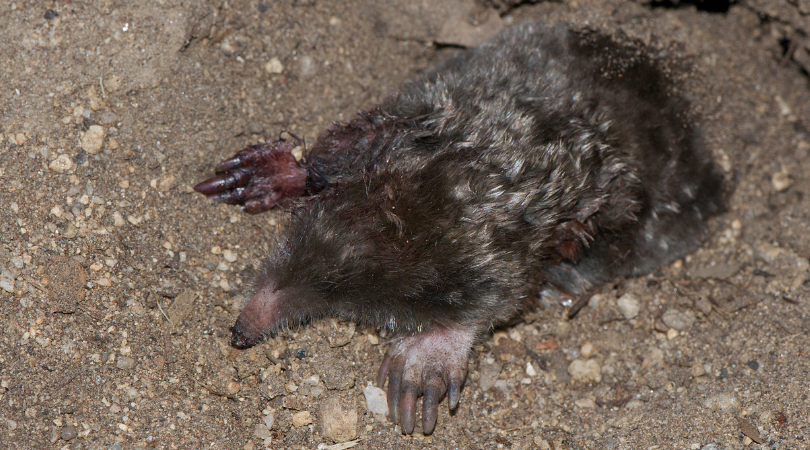| Townsend’s mole – Sccapanus townsendii Western Washington Is home to the largest mole in North America, the Townsend’s mole (Scapanus townsendii). The Townsend’s Mole can be found west of the Cascade Mountains ranging from southern British Columbia to northern California. They thrive in moist soils that can be easily worked through in meadows, floodplains, fields, gardens, and coniferous forests. Many people mistake moles as rodents, but they are a part of the Talpidae family, along with shrews and opossums. Talpids are insect-eating, digging mammals, and rely primarily on their sense of touch to get around due to having poor eyesight. The Townsend’s mole has a round body with short, black, velvet-like hair. Unlike other mammals, moles have hair that can move in every direction allowing for them to easily maneuver underground. The Townsend’s mole is known for its enormous, shovel-like front feet that allow for them to essentially “swim” through the soil, allowing for them to dig over hundreds of meters of tunnels a day. As they swim through the soil, they search for earthworms, insect larvae, and plant roots to feed on. At night, Townsend’s moles like to adventure into lawns and gardens looking for food, leaving behind mounds of dirt, or molehills along their path. |
 |
| Townsend’s moles have changed very little on the evolutionary scale throughout the last 130 million years and have similar traits to the first mammalian species that inhabited our planet. They are flat-footed and have a small brain that lacks some of the convolutions that our more advanced mammals have today. As a solitary species, they are incredibly territorial to the point where they will fight intruders to their own death trying to protect their home range. Moles can be very beneficial to your lawn, garden, and to our environment! As moles move through the soil, they aerate the soil, improve soil drainage, and help cycle nutrients throughout the soil for other plants and animal to utilize. They also help with pest control, and feed on insects, like beetles, that can damage your lawn and other plants. If you do wish to rid of moles, there are humane options available to help deter moles from your property. Transonic mole repellents send out vibrations and sounds to help deter moles and other pests and these devices can be found at most hardware stores. Alternatively, a home remedy application to your lawn of 6 ounces of castor oil, 2 tablespoons of dish soap, and 1 gallon of water will do the trick. And lastly, Mole Scram is a granular repellent that can help deter moles from your yard without killing them, or other animals because it gives vegetation and insects a bad taste. These unique creatures can be a nuisance but also a benefit. |


Recent Comments